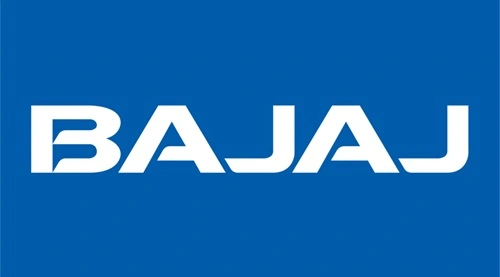Bajaj Auto Limited, a flagship of the Bajaj Group, is one of India’s most renowned and globally recognized automotive manufacturers, specializing in two- and three-wheelers. With a rich history dating back to 1945, the company has made significant strides in the automotive industry, positioning itself as the world’s third-largest motorcycle manufacturer and a leading exporter. Its robust product lineup includes brands like Pulsar, Discover, Platina, and Avenger. A SWOT analysis in 2024 offers insight into Bajaj Auto’s market standing, strengths, challenges, and future opportunities.

Bajaj Auto Company Overview
Bajaj Auto has established itself as a household name in the Indian two-wheeler market, widely known for its popular models across motorcycles, scooters, and three-wheelers. The company has a dominant presence in international markets, exporting to over 70 countries globally. In FY 2023-24, Bajaj Auto saw substantial growth in both domestic and international segments, with a key focus on maintaining its leadership in motorcycles while expanding its electric vehicle (EV) portfolio. The company also remains committed to sustainability, innovation, and customer-centric solutions.
Strengths
1. Strong Market Presence: Bajaj Auto holds a significant market share in India’s two- and three-wheeler segment. Its extensive distribution network and a broad range of models across different price categories enhance its market penetration.
2. International Expansion: Bajaj Auto exports a considerable portion of its production, with more than 40% of its revenue coming from international markets. Its strong export performance has made it a prominent player in regions like Africa, Latin America, and Southeast Asia.
3. Strategic Alliances: Bajaj has formed successful partnerships with global companies such as KTM, Husqvarna, and Triumph, allowing it to expand its portfolio and enter the premium motorcycle segment.
4. Cost-Effective Manufacturing: Known for its efficient production processes, Bajaj Auto has managed to maintain a competitive edge through cost-effective manufacturing, enabling it to offer high-quality motorcycles at affordable prices.
Weaknesses
1. Limited Presence in the Premium Segment: Despite its global reach, Bajaj Auto still lags in the premium motorcycle segment, particularly when compared to global brands such as Harley-Davidson and BMW. This has limited its ability to capture the high-margin luxury segment.
2. Dependence on Two-Wheeler Segment: Bajaj’s focus is heavily centered on two- and three-wheelers, which makes the company vulnerable to changes in consumer preferences or economic downturns affecting this segment.
3. Underinvestment in Customer Service: The company has faced criticism for not investing enough in customer-oriented services, which can affect brand loyalty in competitive markets.
Opportunities
1. Expansion in Electric Vehicles (EVs): With the growing global demand for electric vehicles, Bajaj Auto has an opportunity to leverage its expertise to expand in this sector. Its recent foray into the EV market with the Chetak Electric scooter has been well-received, and further investments in electric mobility could yield significant returns.
2. Growing Middle-Class Demand: India’s rapidly growing middle class presents a significant opportunity for Bajaj to introduce affordable yet technologically advanced motorcycles. By launching models catering to the rising aspirations of this demographic, Bajaj can expand its market share.
3. International Market Growth: Bajaj Auto has substantial opportunities for further international expansion, particularly in emerging markets where demand for two-wheelers is increasing. Strengthening local collaborations and improving distribution networks could help Bajaj cement its position globally.
4. Technological Advancements: By adopting cutting-edge technology and investing in R&D, Bajaj can enhance its product offerings in areas such as connected vehicles and smart technology integration.
Threats
1. Increasing Competition in EVs: The global shift towards electric vehicles is both an opportunity and a challenge for Bajaj. With companies like Hero and TVS investing heavily in electric vehicles, Bajaj faces stiff competition in the domestic EV market.
2. Economic Volatility: Bajaj Auto is exposed to economic fluctuations, both in India and globally. A recession or economic downturn can reduce consumer spending on automobiles, impacting the company’s sales.
3. Fluctuating Raw Material Prices: The automotive industry is highly sensitive to changes in the prices of raw materials like steel, aluminum, and rubber. Price volatility can affect Bajaj’s profit margins, especially in price-sensitive markets.
4. Geopolitical Risks: As an exporter, Bajaj Auto is vulnerable to geopolitical tensions and trade barriers that can disrupt its international operations and affect revenue streams.
Future Plans and Challenges
Bajaj Auto is focused on maintaining its leadership in the two-wheeler market while expanding its footprint in the electric vehicle segment. The company has ambitious plans to increase its share in the global motorcycle market, particularly in the premium and electric segments. However, challenges such as intense competition from local and global players, volatile raw material prices, and the need for further investment in R&D and customer service pose significant hurdles. Additionally, the company must continue to address the growing demand for eco-friendly and energy-efficient vehicles.
Conclusion
Bajaj Auto’s ability to adapt and evolve has helped it retain its position as a dominant force in the global two-wheeler industry. The company’s strengths, such as its extensive distribution network, international presence, and cost-effective manufacturing, give it a competitive edge. However, to stay ahead, Bajaj must focus on expanding its premium product lineup, investing in customer service, and accelerating its transition to electric mobility. With the right strategy, Bajaj Auto can overcome its challenges and continue to thrive in the dynamic automotive market.